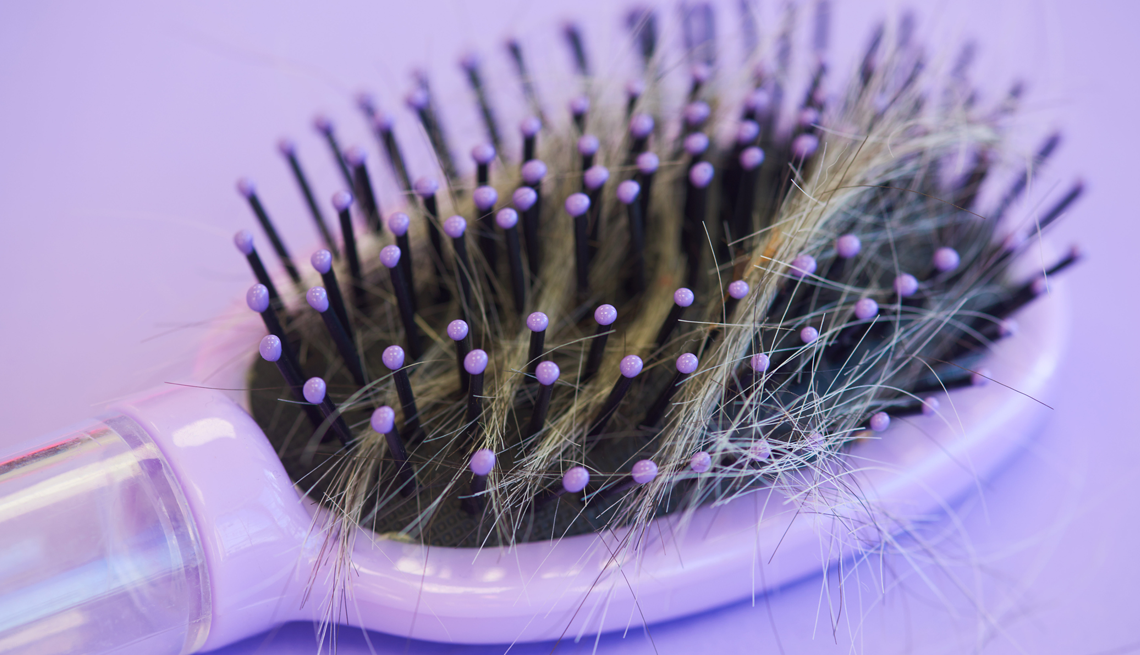
What is Alopecia? Plus 6 Treatments for Hair Loss
- Select a language for the TTS:
- UK English Female
- UK English Male
- US English Female
- US English Male
- Australian Female
- Australian Male
- Language selected: (auto detect) - EN
Play all audios:

If you often wear a hairstyle like braids or a tight bun that puts prolonged strain or stress on the hair follicle, that can cause a type of permanent hair loss called traction alopecia.
Several serious diseases also attack the hair follicle, says Robert Brodell, a dermatologist at the University of Mississippi Medical Center. Alopecia areata is an autoimmune disease that
causes hair to fall out in nickel- or quarter-size patches. You may notice bald spots on your scalp. “Your body’s immune system is attacking the hairs,” Brodell says. Alopecia areata tends
to be asymptomatic aside from the hair loss, Brodell says: “No itching, no irritation, no pain. You just notice hairs coming out in patches.” By contrast, scarring alopecia, another
autoimmune disease that causes hair loss, is often accompanied by itchiness, tenderness and scaling of the scalp. Scarring alopecia is the most devastating type of hair loss, Mirmirani says,
because it permanently destroys the hair follicles. IF YOU HAVE ALOPECIA, CAN YOUR HAIR GROW BACK? A variety of treatments have been developed to help regrow hair and thicken existing hair
on patients with alopecia, dermatologists say. Their effectiveness largely depends upon what type of alopecia you have and how quickly you start treatment. Generally speaking, the sooner you
start treatment, the more options you have and the better your results, dermatologists say. WHAT ARE THE BEST TREATMENTS FOR ALOPECIA? Dozens of over-the-counter supplements and products
purport to reverse hair loss, making it tough for patients to know which ones work and which don’t. Some small, limited studies have found that certain supplements and shampoos could be
helpful, dermatologists say. However, your best bet if you’re suffering from hair loss is to see a board-certified dermatologist who can determine what’s causing your alopecia and then
recommend a treatment plan. The following five evidence-based treatments have been shown to help reverse hair loss: 1. INTRALESIONAL INJECTIONS If you catch alopecia areata early when you
have only a few small bald spots, your doctor can inject steroids into those areas to stimulate hair regrowth. “We put a little steroid right into the dermis,” Brodell says. “You start to
see hair growing right in those tufts. It works great.” However, if a patient waits too long to seek treatment, Brodell says, “the problem is, you can’t inject with a needle in 10,000
areas.” 2. TOPICAL MINOXIDIL (ROGAINE AND GENERIC) A large body of research has shown that these over-the-counter creams and foams, applied to the scalp daily, are effective at stimulating
hair growth, increasing hair density and halting hair loss over time. Most users see results after consistent use for about two months.
